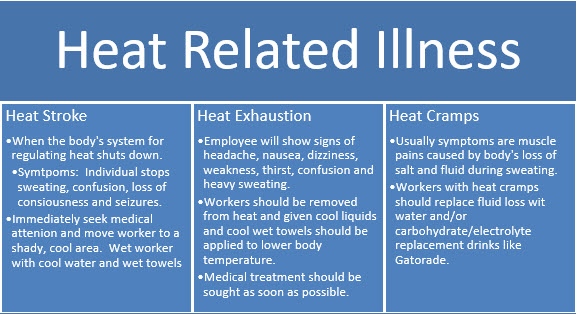A month ago I was in Las Vegas, NV and the thermometer hit 116 degrees. The heat was so intense that I avoided being outside as much as I could (no, I did not use it as an excuse to drink or gamble). I was lucky to be able to find comfort inside and in air-conditioned environs. But, it made me think “what if I was out in this all day running a ride, or sitting inside a hot ticket booth or supervising a go-kart track?” What if I didn’t have shelter from the heat? What could happen? What would I do? Now, I am a pretty tough guy, and I know I would find a way to hydrate and protect myself, but even with water and some shade, the prolonged exposure to heat would take its toll on this 50-year-old body.
The very nature of our industry requires us to be outdoors during the hottest months of the year. Our livelihood is made during the summer season. Knowing that, and appreciating the importance of taking care of our employees, what can we do to help with heat-related exposure? Let’s first refresh our understanding of the common types of heat-related illness (Source: OSHA Fact Sheet)

According to OSHA the following are occupational factors that may contribute to Heat-Related Illness’?
1. High temperature and humidity
2. Low fluid consumption
3. Direct sun exposure (with no shade) or extreme heat
4. Limited air movement (no breeze or wind)
5. Physical exertion
6. Use of bulky protective clothing or equipment
Knowing and understanding these factors, we can all do our parts in monitoring the physical environment that our employees are working in daily. But, that is just one of several elements of a well thought out prevention program. Your show should consider the following key elements:
1. Designate a person to oversee Heat Illness Prevention
2. Educate employees to recognize and identify hazards and factor that lead to Heat Illness.
3. Provide ready access to water, rest and shade
4. Allow workers to acclimatize themselves to heat slowly
5. Consider modified work schedules to rotate employees and limit prolonged individual exposures to heat.
6. Train employees on recognition and treatment of Heat-Related Illness’.
7. Implement Emergency Planning and Response Protocols for Heat-Related Illness.
Employees are a company’s greatest asset. Without them rides don’t run, games don’t operate, and concessions don’t open. It should be an organizational priority during the summer months and even during hot days in winter quarters, to keep your employees healthy and cool. With a little bit of planning, education, compassion, and action, a well developed plan will go a long way to keeping your staff healthy and your show running well, all through the long, hot summer.
For more information about this topic, I recommend visiting www.osha.gov/heat and www.noaa.gov/features/earthobs_0508/heat.html. Remember, safety isn’t expensive…it’s priceless!
